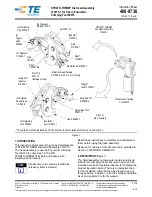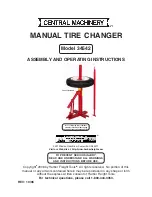
Operating Instructions
Stapling Plier pneumatic
130/1916 P/PU/PUX | 130/2516 P/PU/PUX
Page:
3
Mod.:
02/2019
ET
543
Seite 3 von 8 14.02.19 P:\Technik\ZANGEN\Zange 130\Bedienungsanleitung\englisch\Manual 130-1916 P Pneum engl 02_2019.docx
To avoid injury or damage, the operator must additionally observe the company's internal safety
guidelines!
In addition, we would like to refer to further national rules and safety provisions which are not contained
in this manual.
Keep persons who are not instructed, especially children, away from your work
area!
If damage to the device is determined by the operator during production, the device may no longer be
used and must be repaired by a professional!
The required personal protective equipment must be provided by the operator.
Only original parts may be used as spare parts!
2
Intended use
The stapling device is a pneumatic stapler, primarily used for the stapling of single and double
corrugated cardboard, but also of other thin and soft materials.
Don’t staple into hard and brittle materials. This can damage the tool.
The stapling device may
only
be used as intended. It may only be used, operated and
maintained according to the information contained in this operating manual.
Other usage can cause damage to tool and person. This is in the responsibility of the
operator.
3
Ambient conditions/Emission
The device should be operated at room temperature, protected against environmental influences.
Use within an explosive atmosphere is permitted only with prior consent and written permission of the
manufacturer.
The noise emission is less than 70 dB(A).
Non-atmospheric gases are not released during the stapling process.
4
Warranty and liability
Our “General Terms of Sale and Delivery” shall generally apply”
These terms were made available
to the operator by the time of contract award at the latest.
Any warranty and liability claims in the case of personal and material damage shall be excluded,
if such damage occurred as a result of:
-
Improper use of the tool (not in compliance with intended use).
-
Non-compliance with the specification provided in the operating instructions as regards
transport, storage, assembly, commissioning, operation, maintenance and setup of the
equipment.
-
Operation of the tool with defective safety equipment or improperly installed or non-functional
safety and protection facilities.


























